THE CITROËN 2CV: I LOVE THAT TIN SNAIL
I always wanted a Deux Chevaux. I first saw that much beloved French car when I first visited Paris in 1972. I remember thinking that something that funny looking must have been a model car project gone terribly awry. A sardine tin on wheels. But there were so many…partout.
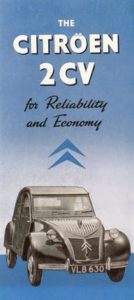 The 2CV was the brain child of Pierre Michelin, who became president of Citroën in 1934 when Michelin (tire manufacturer) purchased the bankrupt car company. He wanted to produce a low-cost, durable “umbrella on four wheels” for farmers to take their goods to market. The development project would be called Toute Petite Voiture (TPV) or “Very Small Car.”
The 2CV was the brain child of Pierre Michelin, who became president of Citroën in 1934 when Michelin (tire manufacturer) purchased the bankrupt car company. He wanted to produce a low-cost, durable “umbrella on four wheels” for farmers to take their goods to market. The development project would be called Toute Petite Voiture (TPV) or “Very Small Car.”The car was to be minimalistic and yet wholly practical. As now famously defined in the original specifications, the TPV had to be able to carry a basket of eggs on the seat, across a plowed field without breaking a single one, a requirement that ensured the little car could also comfortably accommodate four adults under other circumstances. Bearing in mind that this was a car geared toward “peasants,” other (rather ambitious) goals included the capability of driving 50 kilos of farm goods to market, going 50 kilometers/hour (31 mph) and using 3 liters of gas to travel 100 kilometers (or less than a gallon of gas to go 60 miles).
In 1939, 250 TPVs were produced for final testing purposes and by the summer of the same year, the quirky car with a nine- horsepower engine (less than half the size of today’s riding lawn mower) was ready to be unveiled. Its name would be Citroën CV, reflecting its “tax horsepower” which, at “2,” it was at or very near as cheap as one’s license plates could get.
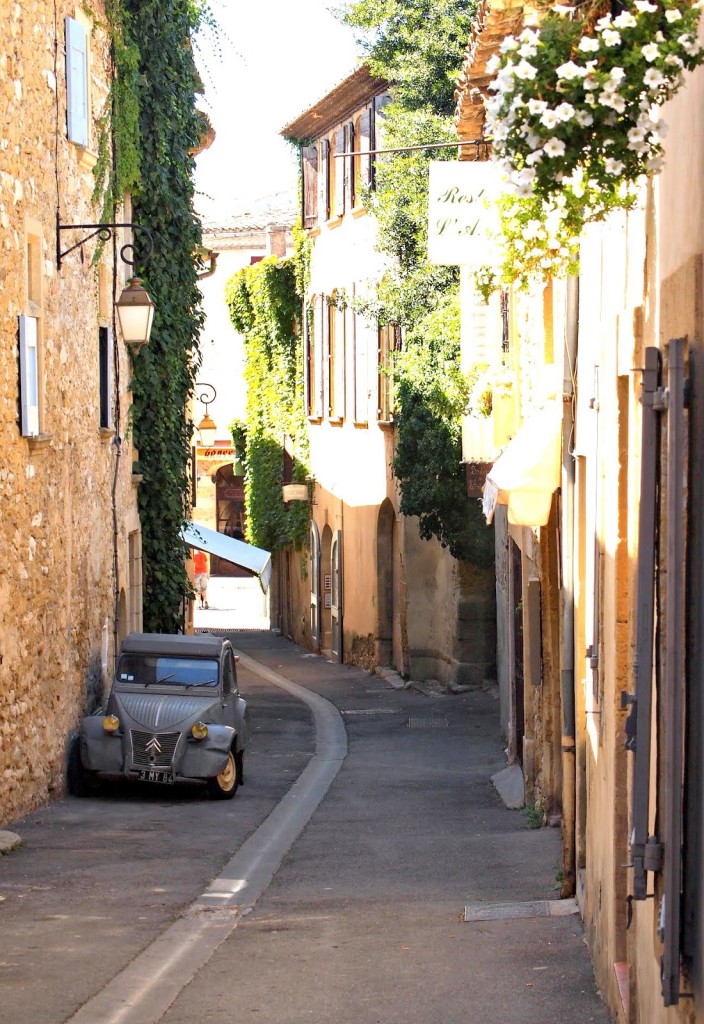
A old 2CV in Lourmarin is a frequent “star” in the
many photos taken by tourists.
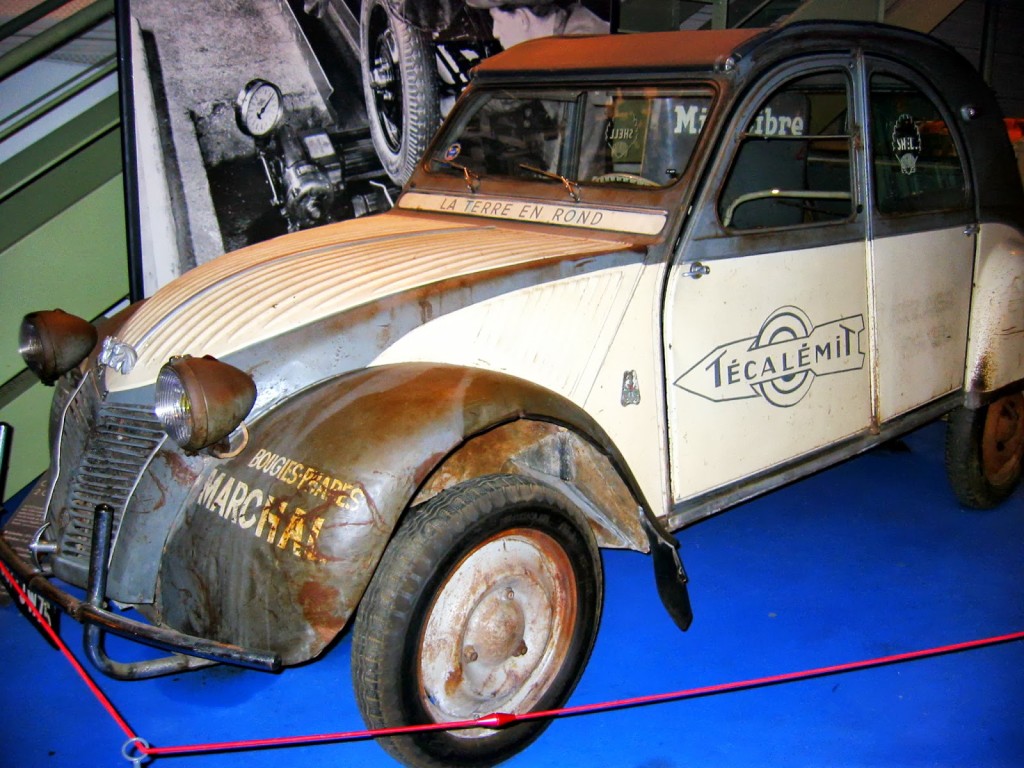
The first car to go around the world in 1958. Now on display at a museum in Sarthe
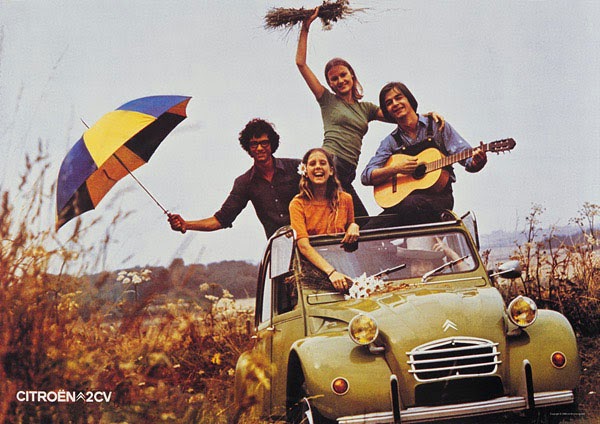
An old 2CV poster
Production continued for 42 years. Nearly 4 million 2CVs were made and over a million Fourgonnettes (2CV delivery vans).
This funny looking car is referred to as a “trailblazer” among other small cars in the mid-20th century. It had front-wheel drive, four–speed manual transmission (very unusual in this era), a sophisticated suspension system, an air-cooled engine and inboard front brakes (also uncommon). The engine was very lightweight: a 425 cc two-cylinder engine that weighed just 100 pounds (45 kg).
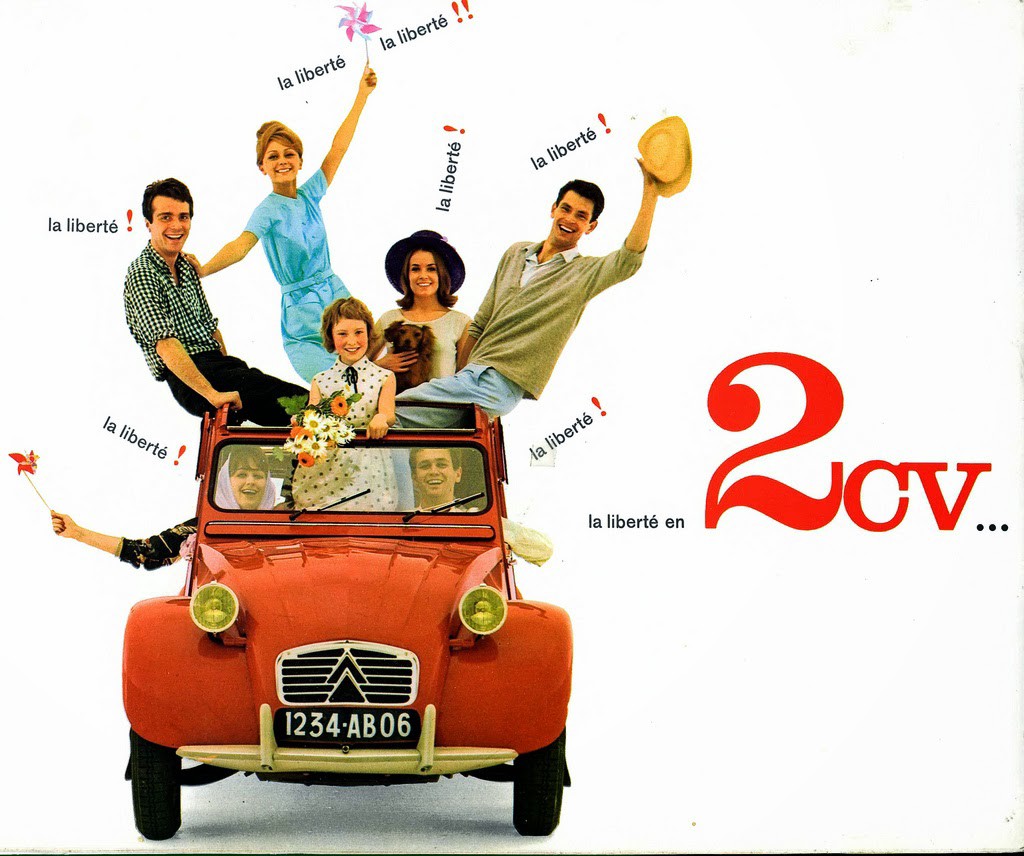
2CV ad
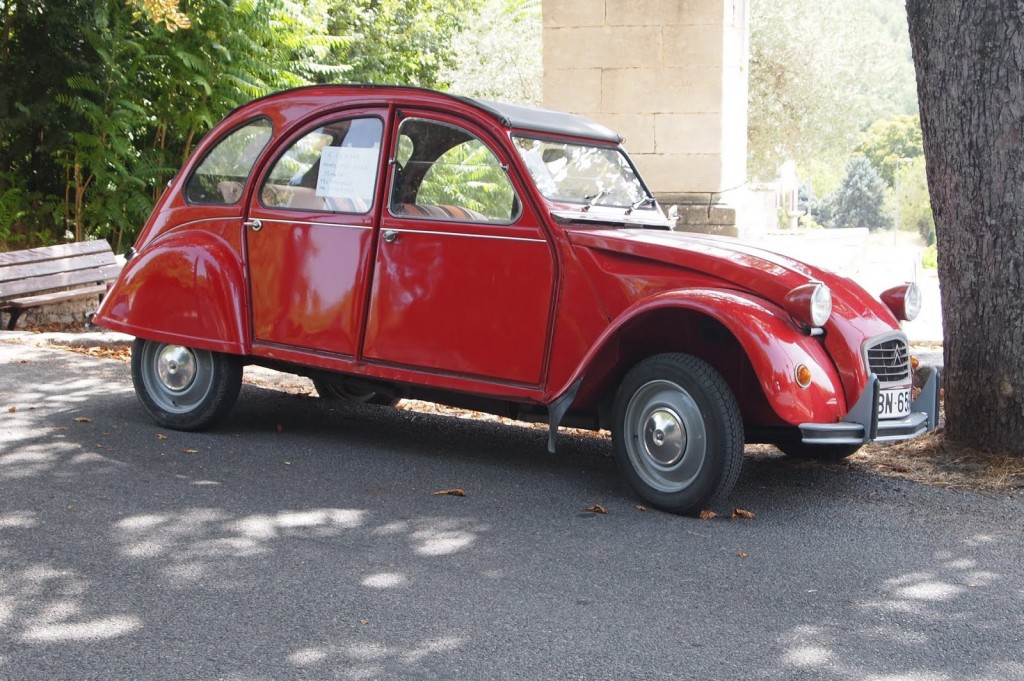
As the years passed, the cars got faster and more luxurious (relatively speaking). Even James Bond drove a high-performance model in one of his famous high-speed chases in For Your Eyes Only.
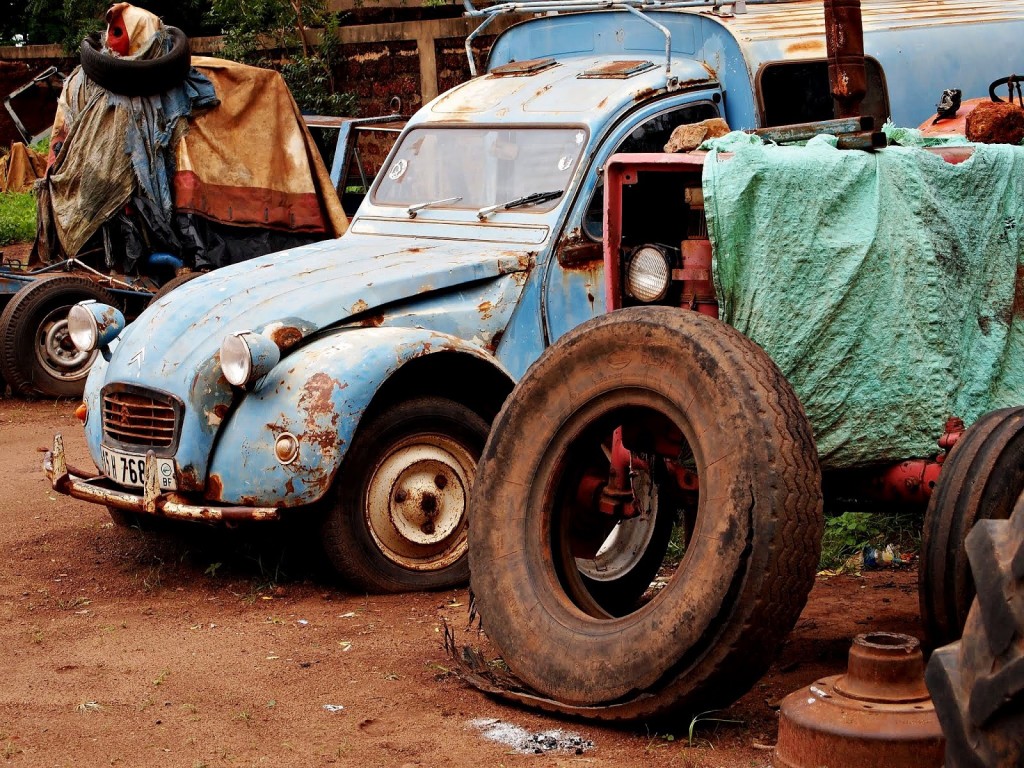
A 2CV rusting gracefully in Ouagadougou
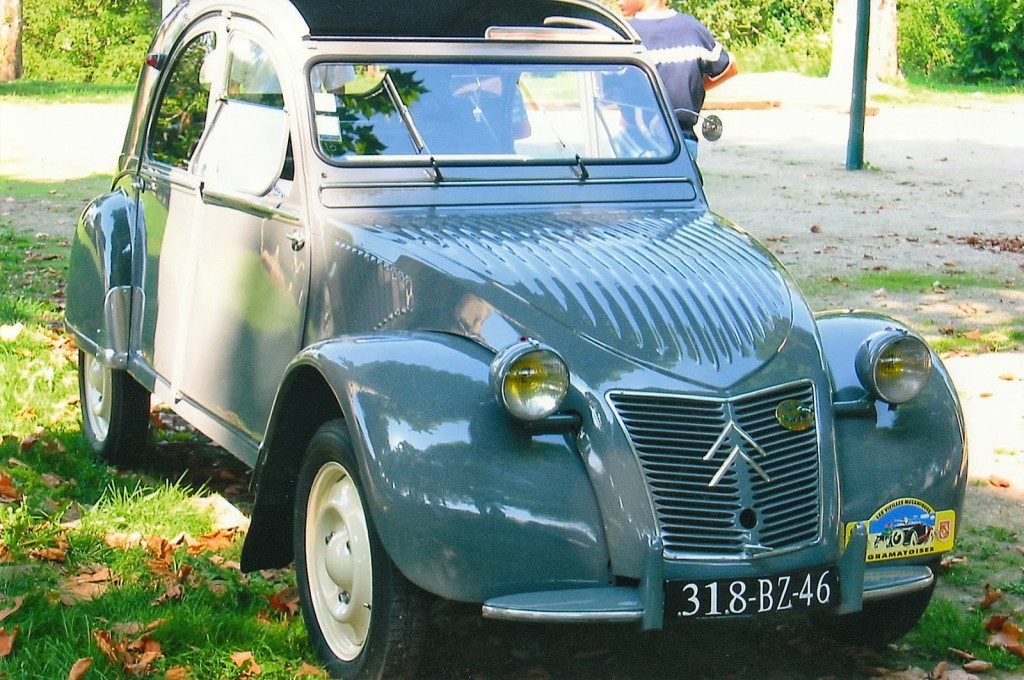
An immaculately restored early 2CV
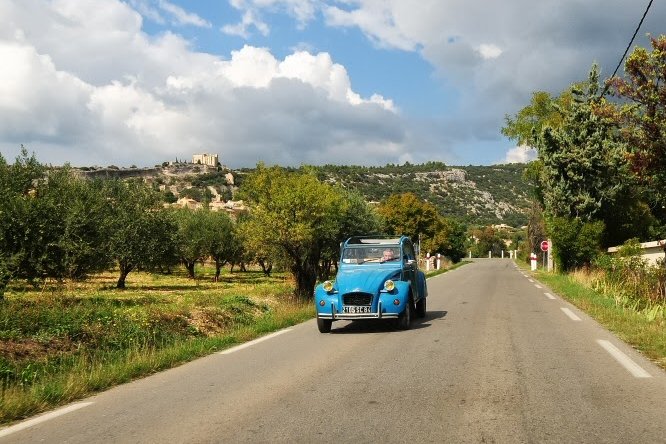
A 2CV in Provence. Photo by FS Gilbert.

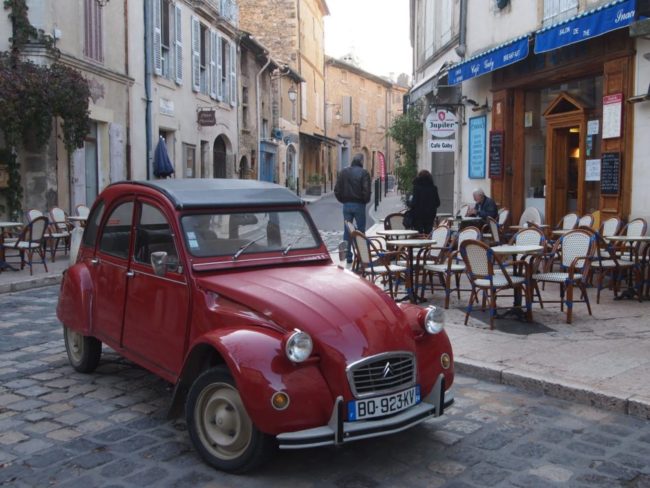
Loved the video!! When you go for your spin, can I come?
Olá Susan! Adoro carros antigos e esse post me fez ter saudade do passado, mesmo sem ter conhecido esses carros. Já vou acessar sua página no facebook. Boa sorte! Um abraço, Léia
What a fun article! I had friends in the 70s who had one in my home town. I would occasionally get in it and go someplace with one of them to run errands. It was fun – loved having people stare at you – but the comfort level made me want shorter errands! I think you are wise to rent before committing… we get so used to our comfortable vehicles these days! ~ David
Is it possible that I’m the only reader of your blog who’s actually owned a deux chevaux?
Mine was the van version – the entire exterior except the doors and the fenders were corrugated, which managed to make the car look as if it were made of corrugated iron. I owned it from 1960 to 1963 while still living in England. It was classified as a commercial vehicle, which made the registration fees much cheaper, but at that time in the UK commercial vehicles were limited to 50 mph. Nevertheless I was once given a speeding ticket for exceeding 50 mph and my pleas to the traffic cops that the vehicle wouldn’t go faster that 50 mph fell on deaf ears. I’m very skeptical of the claim that it could be driven across a plowed field without breaking eggs on the seat – to achieve that it would have to have driven at snail’s pace. One of the cars most endearing quirks, given the extreme range in the suspension, was that if one went over a bump at a good speed one would be catapulted up out of the seat (in the days before seat belts) and hit one’s head on the roof. Another less endearing characteristic was that it was not possible to change down from second gear to first gear while the car was moving, and so while climbing a steep hill and not making it in second gear one had to stop, and start again in first. One tended to get rather flustered, especially if the road was narrow and a queue of hooting, flashing vehicles piled up behind one.
My deux chevaux let me down only twice. On the first occasion I was driving my friend early one Saturday morning to meet her sister flying in to Heathrow from Philadelphia. The seats took the form of a hammock, slung on a metal frame, and half way to the airport my seat suddenly gave way and, since we were very pushed for time, I drove the rest of the way to the airport through London traffic while sitting on the floor. Switching the seats turned out to be fairly simple, and so on the way back it was my passengers who had to sit on the floor.
On the other occasion I was taking my parents, who were moving, to view houses in the extreme southwest. In the depths of the countryside I stopped at a village gas station to fill up, but then the car wouldn’t start. And so we pushed it in to the garage to investigate. It seemed as if half the village came along to investigate, including the village idiot who made the immortal pronouncement “Ah – I can see what’s wrong with that – the wheels don’t go round!” Repairs on the spot were obviously impossible and so the car was left there. Faced with the prospect of continuing the journey we reasoned that if we could get a bus to the nearest city (Salisbury) we could go on by train. We inquired about a bus to Salisbury and were told that there were two buses a week, that there was a bus that day, but that it had passed through a few minutes earlier. This discussion was very laid back, unhurried, you should understand. However the garage proprietor took one of his cars and we embarked on a desperate and exciting race to catch up with the bus, which we did, thankfully, a few villages further on.
So I still think that the greatest car in the world is the Citroën (before the merger with Peugeot). I subsequently, in the States, owned a Safari wagon, the most exciting car to drive. Think also of those French gangster movies of the forties and fifties, usually starring Jean Gabin, with the even more famous “Flying Fifteen.” Sorry to go on at such length, but this week’s blog really struck a chord, bringing back the fondest of memories.
Brian
Mais oui! In Provence?!
Good to hear from you, Linda!
Maybe I am of two minds on the subject of cars…you know that we have two cars, one of which is very comfortable even luxurious and another that is devoid of any creature comforts but a hoot to drive. An alter ego? Hmmmm….
Brian,
This is quite possibly the FUNNIEST comment I have ever had the pleasure of receiving! Thank you so much for the laughs (and interesting information)!
This comment has been removed by a blog administrator.